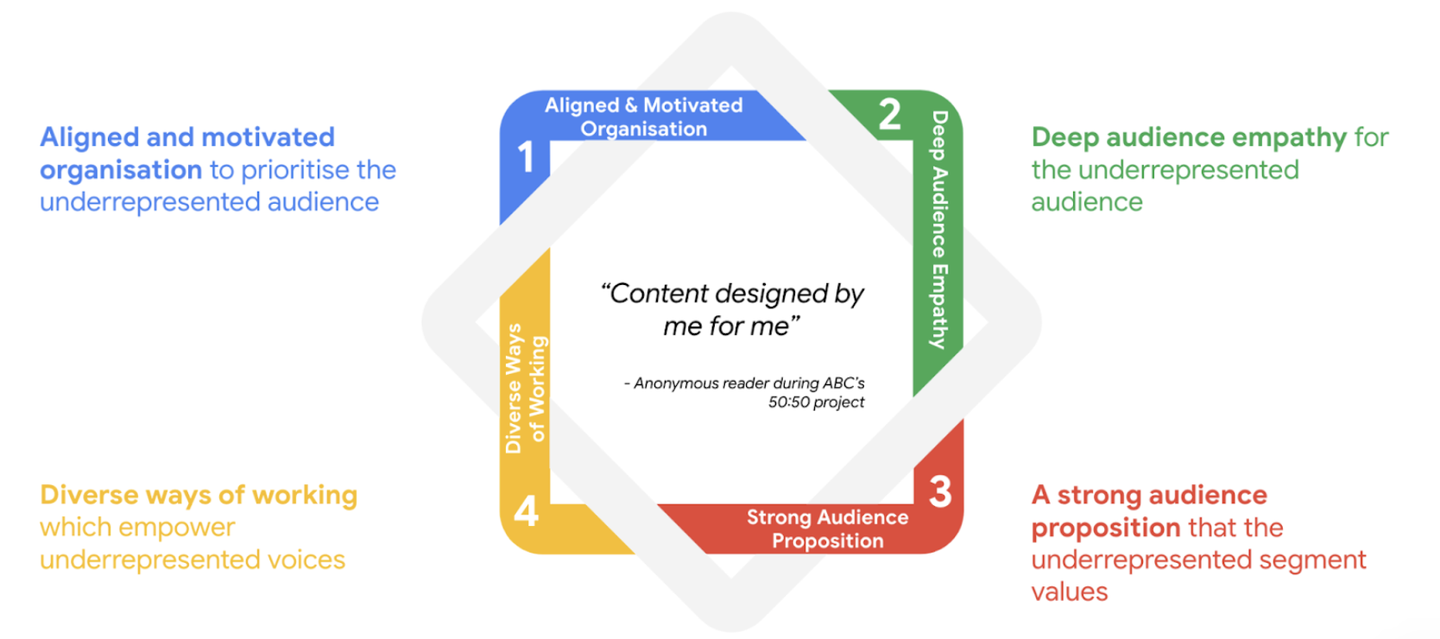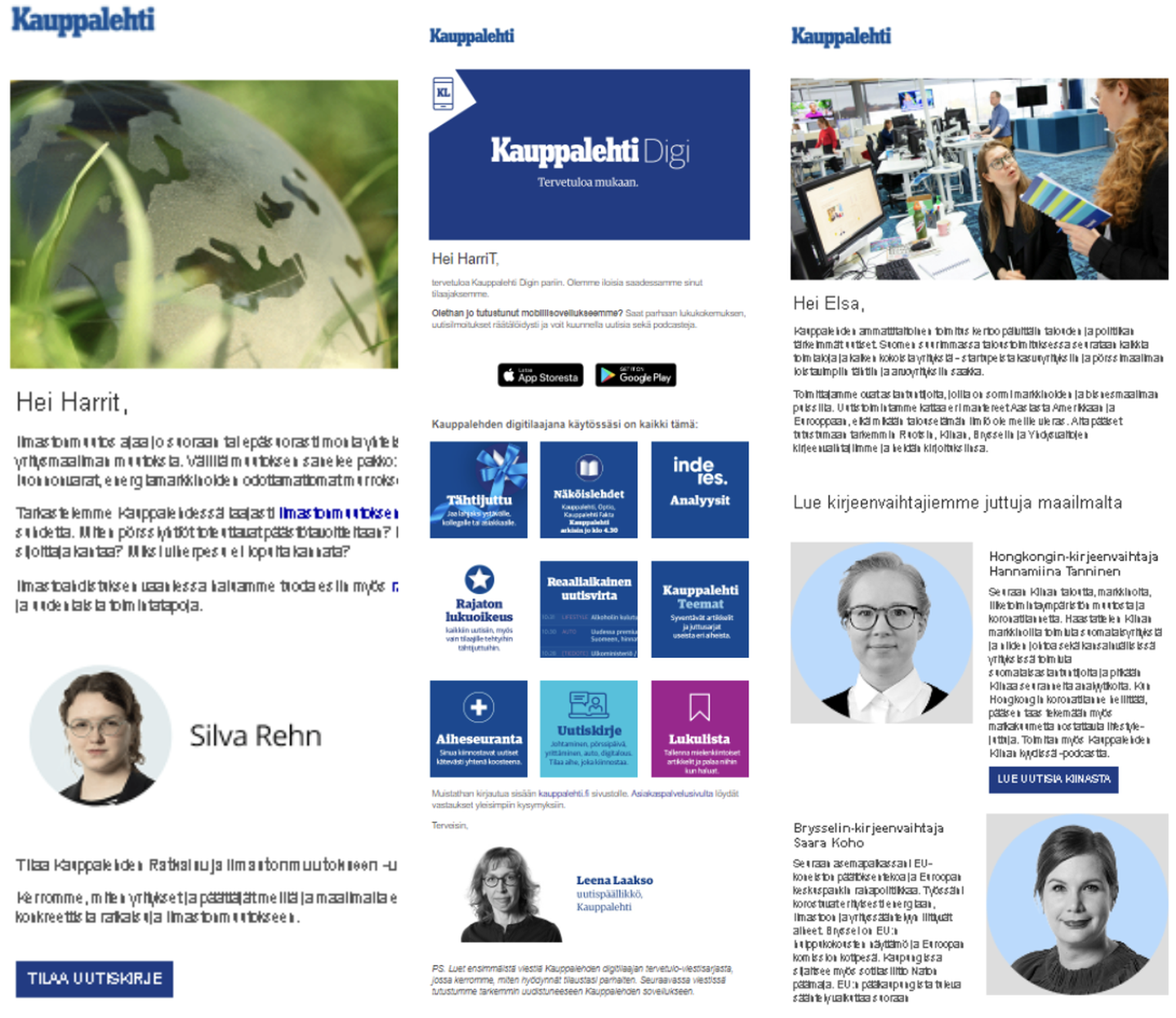




During our work with more than 200 news outlets over the last three years, it is clear that finding and reflecting a more diverse range of audiences is increasingly important if publishers are to succeed in reaching financial sustainability.
Many have initiatives to reach traditionally underserved groups, including content aimed at professional women or social media initiatives designed to attract younger audiences. However, we also heard that progress towards diversity is often slowed by other commercial challenges and hard-to-shift mindsets.
The Audience Diversity Academy (ADA) is a new collaborative effort by the Google News Initiative (GNI) and FT Strategies designed to address the challenges holding publishers back from being more diverse.
Over the last six months, ADA has supported six European news organisations to achieve tangible growth of women or Under 35 readers by understanding both audiences’ needs and by addressing organisational diversity. Our report — Seizing the diversity opportunity: enabling growth in the news business — shares key learnings from the programme and gives insight into the experiments run by participating publishers. You can download the report below.
Download our report
Fill in the form below and download the report in a PDF format for you to be able to read offline.
Central to the programme has been the Audience Diversity Framework, a proprietary model to assess the diversity maturity of publishers and to provide clarity about both the strengths and opportunities within the organisation. We’re pleased to share more about it in this blog post.
Our four-pillar framework
The Framework draws on the FT’s experience of building a strong audience diversity function as well as research from best-in-class projects, like the BBC’s 50:50 project and Reveal’s inclusive workplace strategy.
It consists of four pillars that are each important to consider when growing underrepresented audiences. In particular, it captures the role of both internal capabilities (parts 1 and 4) and external-facing functions (parts 2 and 3) in attracting audiences beyond the typical news consumer.





The framework formed the basis of the programme and gave structure to a six-week period of experimentation, in which publishers tested ideas designed to attract women and Under 35s. These experiments ranged from setting up teams of young journalists to create content for TikTok, using segmented data in the newsroom and optimising job descriptions to increase the number of Under 35 applications.
What have we learnt?
One of several standout learnings from the programme has been the importance of publishers establishing empathy with the target audience (part 2 of the framework). By this we mean, listening to the needs of women and Under 35s, incorporating these insights into a targeted acquisition strategy and positioning yourself as a brand that is relevant to them.
A great example of this is the experiment conducted by Finnish news organisation Kauppalehti to reimagine their onboarding journey. The programme uncovered friction in the series of welcome emails sent to subscribers, which featured older, male staff. The project team felt it could be limiting the number of women converting to a paid subscription.
To test this, it released three new branded marketing emails with topics and content that was relevant to them (as pictured below). It also launched a newsletter focused on climate change, which our analysis uncovered as an important topic for women readers.





The experiments will require further validation but early results show that the percentage of women subscribers to the climate newsletter is higher than the rest of the newsletter portfolio.





Ben is a Senior Consultant at FT Strategies with extensive experience working with global publishers. He previously worked on the Audience Diversity Academy to help six EMEA publishers diversify their audience and build engagement among target segments. Prior to joining FT Strategies, Ben was an independent newsroom and content strategy consultant. He has ten years of experience in newsroom transformation and audience development from his time working at The Guardian and The Times.





Fraser is a Consultant with 2 years’ experience, working most recently on a study assessing the financial sustainability of news publishers across the globe. He leads the FT Strategies partnership with the Freshfields Stephen Lawrence Scholarship Scheme designed to address the disproportionate under-representation of black men from less socially mobile backgrounds in large commercial firms.
